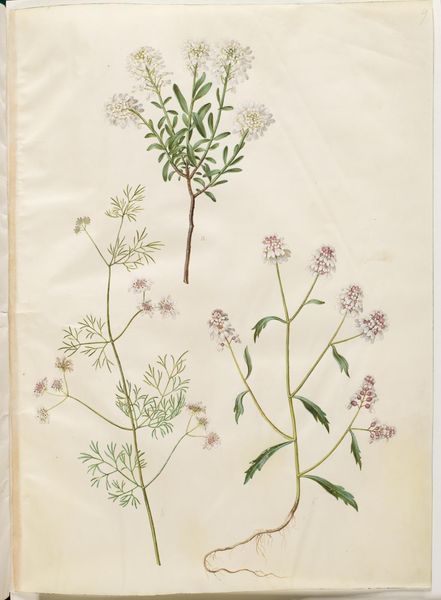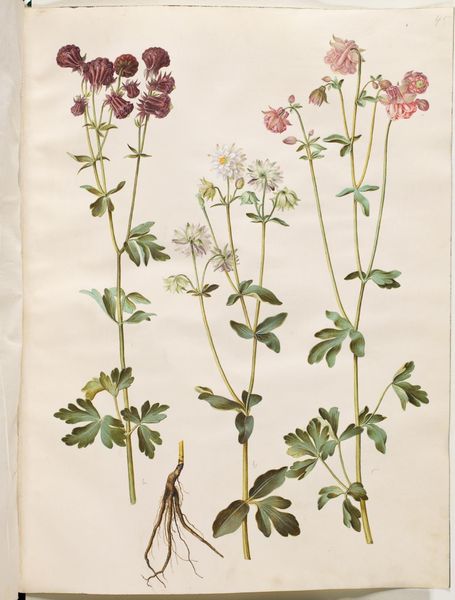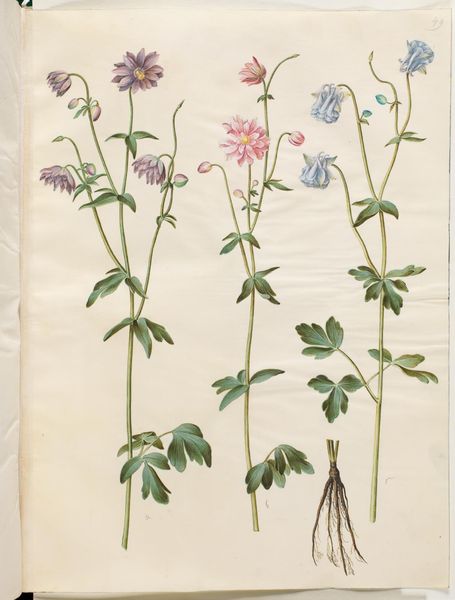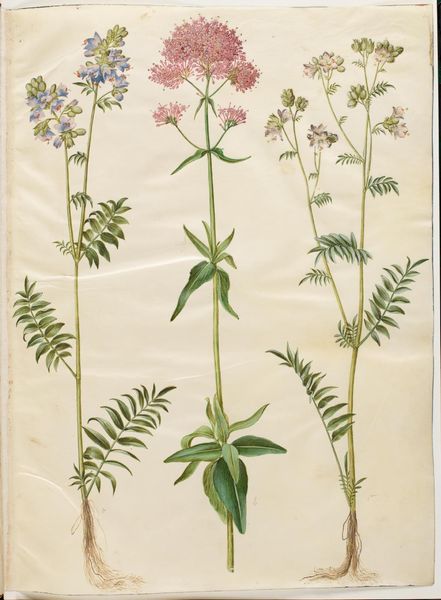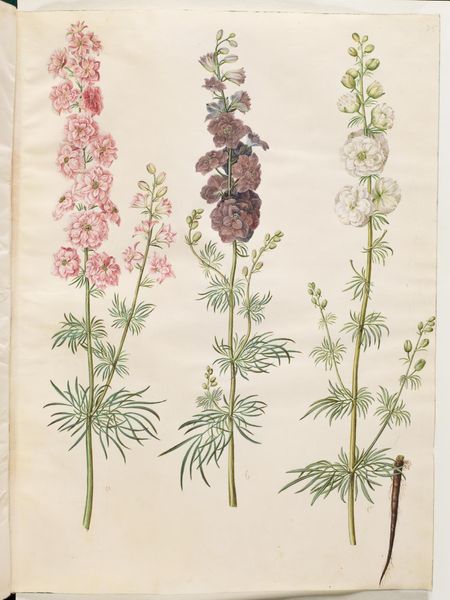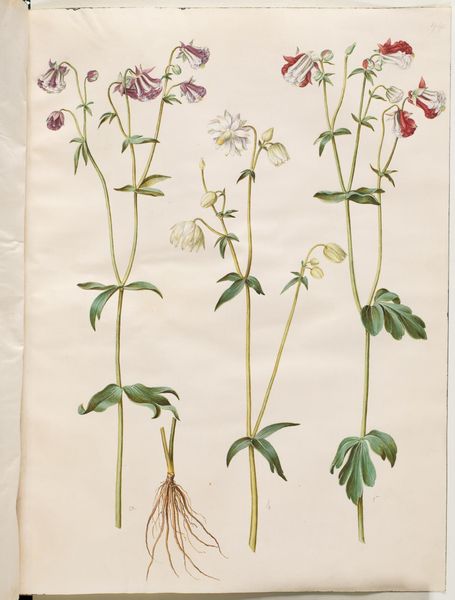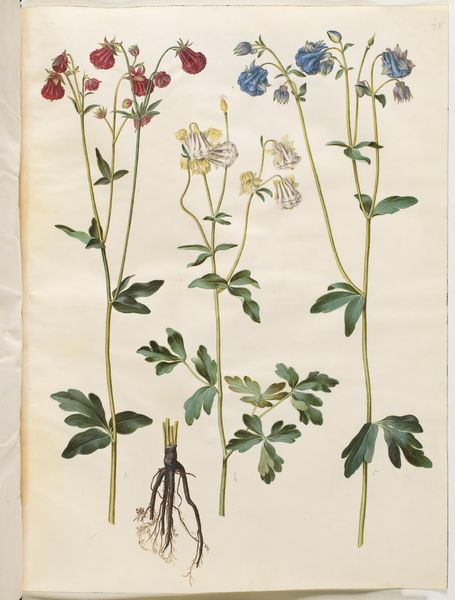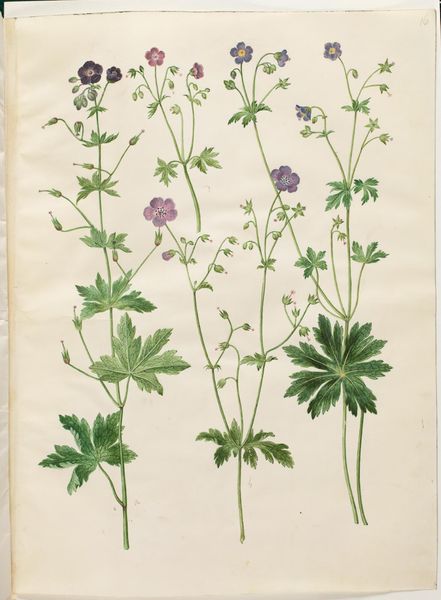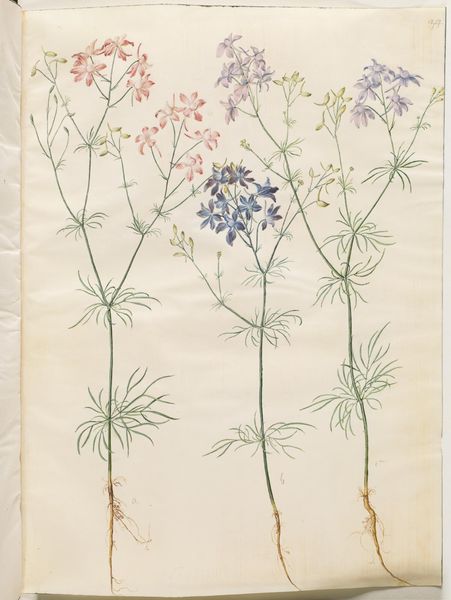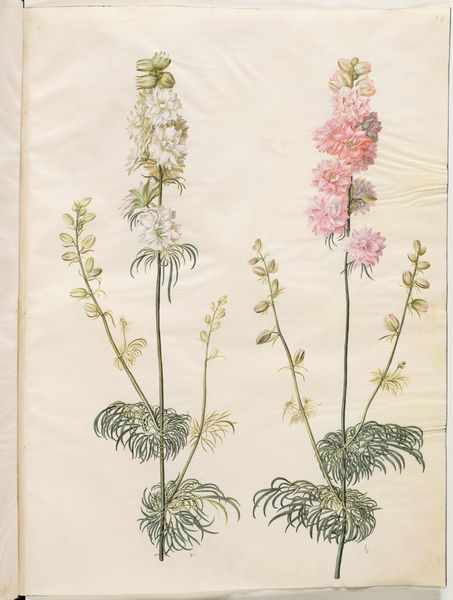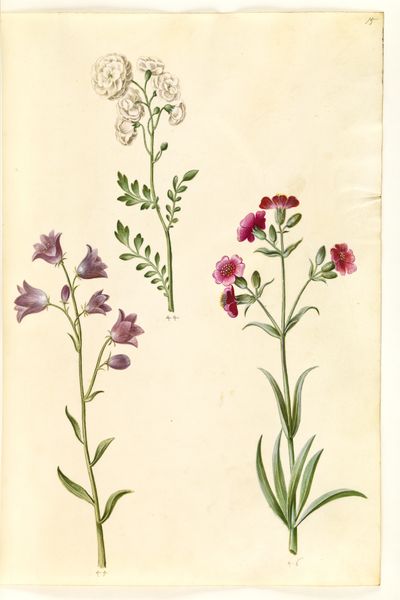
Antennaria dioica (almindelig kattefod) 1649 - 1659
0:00
0:00
drawing, gouache, watercolor
#
drawing
#
medieval
#
gouache
#
landscape
#
watercolor
#
botanical drawing
#
watercolour illustration
#
early-renaissance
#
botanical art
#
realism
Dimensions: 505 mm (height) x 385 mm (width) (bladmaal)
Curator: Looking at this botanical drawing, one is struck by the artist's meticulous attention to detail. What are your first thoughts on this piece? Editor: The immediate impression is one of quiet observation. It’s simple yet captivating. Each flower and root seems presented for careful examination. Curator: Indeed. This is "Antennaria dioica," commonly known as cat's-foot, rendered in watercolor and gouache, dating from 1649 to 1659, part of Hans Simon Holtzbecker's studies here at the SMK. What interests me is Holtzbecker's place during this moment; botanical illustration was then shifting between artistic observation and emerging scientific methodology. Editor: So the illustration exists in the interesting space between observation and categorisation? The piece sits in that space, suggesting a broader dialogue of science and culture through close depictions of seemingly benign flora, echoing colonial collecting habits. The act of depiction, of naming, of framing knowledge. It's not a passive recording. Curator: Exactly. And consider that the commission would most likely be rooted in royal patronage, mirroring societal interests in botany as both science and symbol of control of the natural world. Editor: Precisely. How might we view it through the lens of feminist botanical history, then? Linnaeus famously classified plants using their sexual parts. Looking back, that tells us as much about the botanist as about botany, maybe more! Curator: Interesting. While we admire the artistry, these images inevitably carry cultural baggage. Holtzbecker's "Antennaria dioica" then encourages us to engage with not just nature itself but the human frameworks shaping how we see, understand, and represent it. Editor: So we begin to appreciate it both as botanical documentation and cultural artifact. Seeing is never neutral. These images are imbued with historic and power dynamics. That’s what keeps this fresh today!
Comments
No comments
Be the first to comment and join the conversation on the ultimate creative platform.
